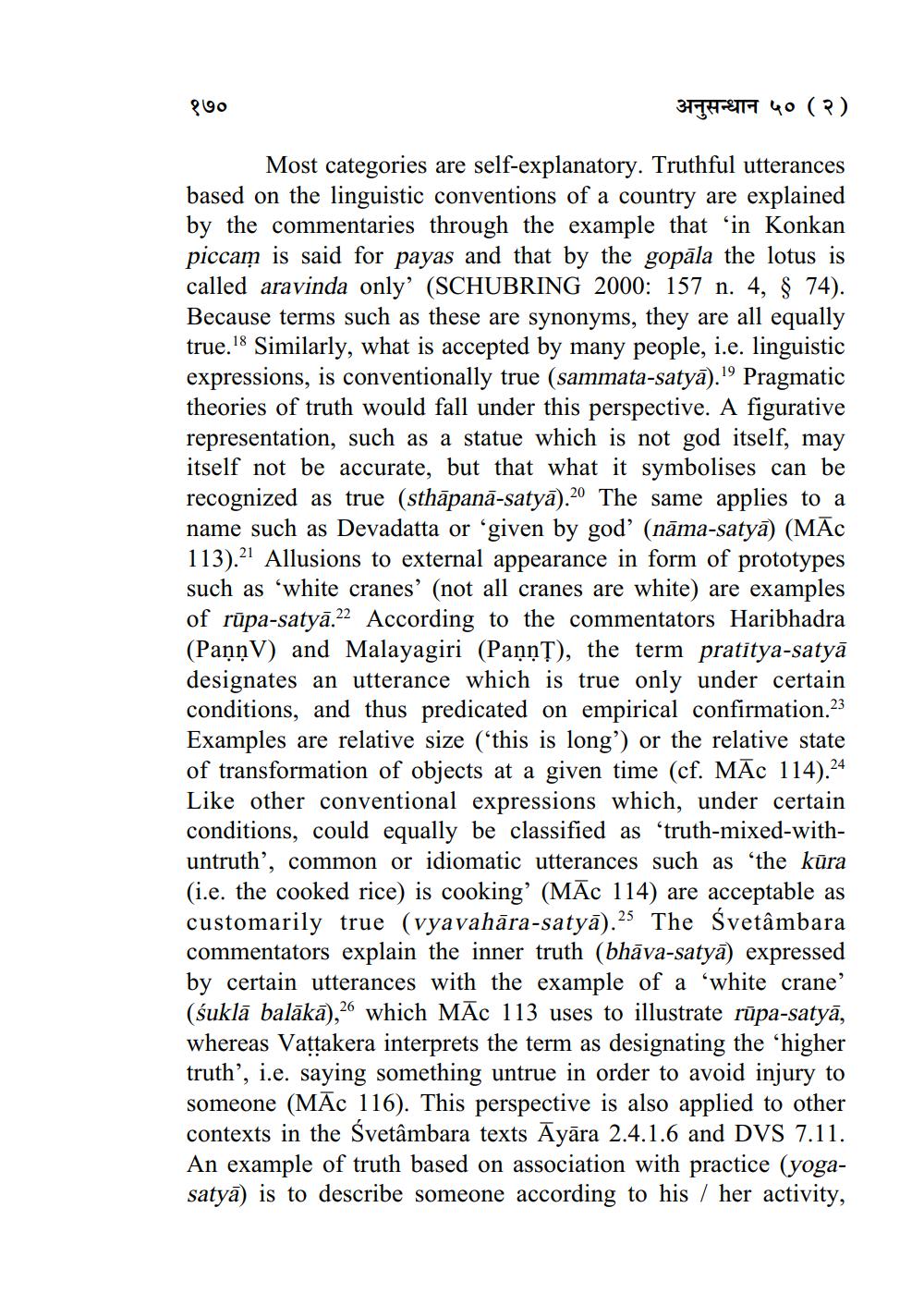Book Title: Truthfullness and Truth in Jaina Philosophy Author(s): Peter Flugel Publisher: ZZ_Anusandhan View full book textPage 5
________________ १७० अनुसन्धान ५० (२) 19 Most categories are self-explanatory. Truthful utterances based on the linguistic conventions of a country are explained by the commentaries through the example that 'in Konkan piccam is said for payas and that by the gopala the lotus is called aravinda only' (SCHUBRING 2000: 157 n. 4, § 74). Because terms such as these are synonyms, they are all equally true.18 Similarly, what is accepted by many people, i.e. linguistic expressions, is conventionally true (sammata-satyā).19 Pragmatic theories of truth would fall under this perspective. A figurative representation, such as a statue which is not god itself, may itself not be accurate, but that what it symbolises can be recognized as true (sthāpanā-satya).20 The same applies to a name such as Devadatta or 'given by god' (nama-satya) (MĀC 113).21 Allusions to external appearance in form of prototypes such as 'white cranes' (not all cranes are white) are examples of rūpa-satyā.22 According to the commentators Haribhadra (PannV) and Malayagiri (PanṇT), the term pratitya-satyā designates an utterance which is true only under certain conditions, and thus predicated on empirical confirmation.23 Examples are relative size ('this is long') or the relative state of transformation of objects at a given time (cf. MAc 114).24 Like other conventional expressions which, under certain conditions, could equally be classified as 'truth-mixed-withuntruth', common or idiomatic utterances such as 'the kūra (i.e. the cooked rice) is cooking' (MAc 114) are acceptable as customarily true (vyavahāra-satya). 25 The Śvetâmbara commentators explain the inner truth (bhāva-satya) expressed by certain utterances with the example of a 'white crane' (śuklā balākā), which MAC 113 uses to illustrate rūpa-satyā, whereas Vaṭṭakera interprets the term as designating the 'higher truth', i.e. saying something untrue in order to avoid injury to someone (MAc 116). This perspective is also applied to other contexts in the Śvetâmbara texts Ayāra 2.4.1.6 and DVS 7.11. An example of truth based on association with practice (yogasatya) is to describe someone according to his / her activity,Page Navigation
1 ... 3 4 5 6 7 8 9 10 11 12 13 14 15 16 17 18 19 20 21 22 23 24 25 26 27 28 29 30 31 32 33 34 35 36 37 38 39 40 41 42 43 44 45 46 47 48 49 50 51 52 53
